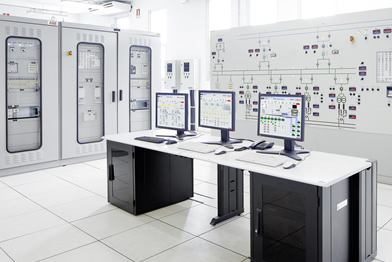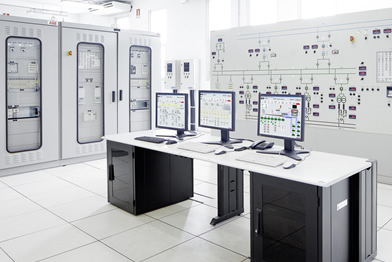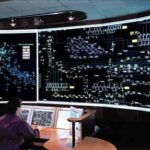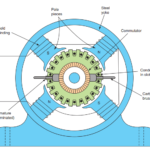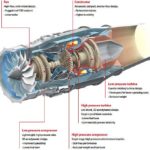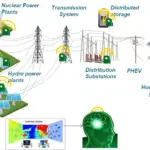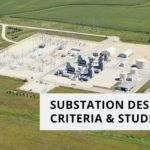IEC 61850 is a standard for the design of electrical substation automation. It has been defined in cooperation with manufacturers and users to create a uniform, future-proof basis for the protection, communication, and control of substations.
Communication plays an important role in the real-time operation of a power system.
In the beginning, the telephone was used to communicate line loadings back to the control center as well as to dispatch operators to perform switching operations at substations. With the entry into a digital age, we needed the technology to cater to the hot requirements, which are;
- High-speed IED to IED communication
- Multi-vendor interoperability
- Support for File Transfer
- Auto-configurable / configuration support
- Support for security
Given these requirements, work on next-generation communication architecture began with the development of the Utility Communication Architecture (UCA) in 1988.
The concepts and fundamental work are done in UCA became the foundation for the work done in the IEC Technical Committee Number 57 (TC57) Working Group 10 (WG10), which resulted in the International Standard – IEC 61850 – Communication Networks and Systems in Substations.
IEC 61850 defines standardized Information Models across vendors and a comprehensive configuration standard (SCL – System Configuration Language).
Features of IEC 61850:
- Data Modeling:
- Primary process objects, as well as protection and control functionality in the substation, is modeled into different standard logical nodes which can be grouped under different logical devices. There are logical nodes for data/functions related to the logical device (LLNO) and the physical device (LPHD).
- Reporting Schemes:
- There are various reporting schemes (BRCB & URCB) for reporting data from server through a server-client relationship which can be triggered based on pre-defined trigger conditions
- Fast Transfer of events:
- Generic Substation Events (GSE) are defined for the fast transfer of event data for a peer-to-peer communication mode. This is again subdivided into GOOSE & GSSE.
- Setting Groups:
- The setting group control Blocks (SGCB) is defined to handle the setting groups so that the user can switch to any active group according to the requirement.
- Sampled Data Transfer:
- Schemes are also defined to handle the transfer of sampled values using Sampled Value Control blocks (SVCB)
- Commands:
- Various command types are also supported by IEC 61850 which include direct & select before operate (SBO) commands with normal and enhanced securities.
- Data Storage:
- Substation Configuration Language (SCL) is defined for complete storage of configured data of the substation in a specific format.
Advantages of IEC 61850
- Offering a complete set of specifications covering all communication issues inside a substation.
- Meeting the requirement for integrated information management providing the user with consistent knowledge of the system on line, rather than just gigabytes of raw data.
- Inter-operability between various manufacturers’ IED’s, thus forming an integrated system.
- Substation Configuration Language(SCL) – Substation Configuration description Language (SCL) is the language and representation format specified by IEC 61850 for the configuration of electrical substation devices. This includes representation of modeled data and communication services specified by IEC 61850– 7 –X standard documents.
- Lowering installation and maintenance costs, with self-describing devices that reduce manual configuration.
- Support for functions difficult to implement otherwise.
